Top 7 Retool Alternatives in 2023
 Jerry Xu
Jerry Xu
Welcome to our blog post on the top 7 Retool alternatives in 2023!
If you’re in the market for a low-code platform to build custom internal tools, you may consider Retool. While Retool is a popular choice, several other platforms are also worth considering. In this post, we’ll introduce you to the top 7 Retool alternatives software development tools you may want to consider in 2023.
These alternatives were chosen based on their popularity, functionality, and overall fit for various use cases. We’ll be discussing the pros and cons of each platform, as well as providing a brief overview of their key features.
Retool is a low-code platform allowing developers to build and deploy custom internal tools quickly. It aims to provide a simple, intuitive interface that enables users to build functional tools without writing extensive code. Retool provides pre-built UI components, a query builder for connecting to databases, and integration with popular APIs, allowing developers to focus on the business logic of their tools rather than the infrastructure. It is designed to be flexible and extensible, allowing developers to add custom code when needed.
So without further ado, let’s dive in and explore the top Retool alternatives of 2023.
ILLA Cloud
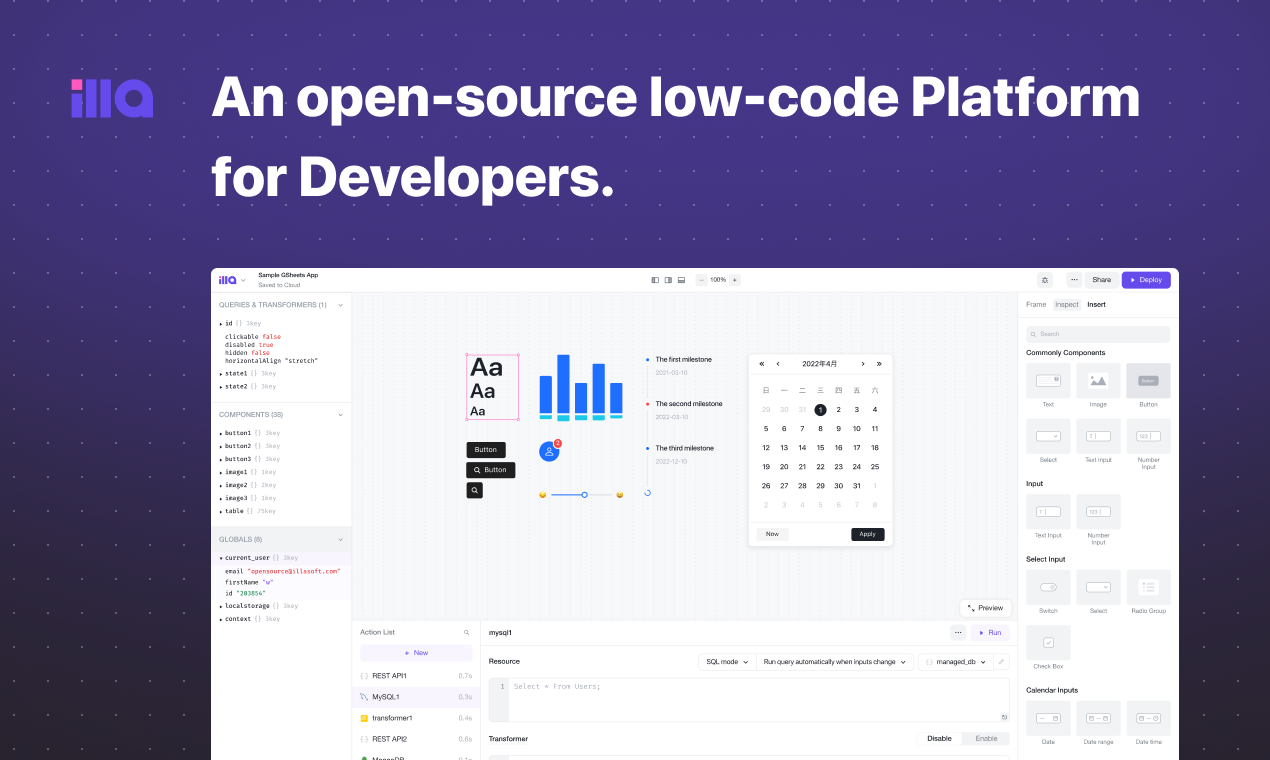
ILLA Cloud is one of the open-source low-code developer tool alternatives to Retool. It integrates existing data sources and CRUD (Create, Read, Update, Delete) operations. Building internal tools with ILLA is ultimately fast.
API integration. Allows users to connect their applications or databases via JSON APIs for easy integration into existing projects.
Open Source Alternatives: Client portals are popular alternatives because they allow users to quickly build a new app without worrying about server-side code. Code platforms can also be used as an alternative to retooling if the user wants to take advantage of open-source technologies like React Native or Vue JS but doesn’t have the budget for developing their custom solution from scratch due to limited resources available within their organization at this time.
External tools like internal tool builders can be integrated directly into your workflow, so you don’t need any programming experience.
Free Use Open Source Tools: Web apps are another option since they’re typically free and already built upon familiar languages like PHP or ASP (Active Server Pages), which makes it easy for anyone who knows how those work together already, so there won’t need much training before starting with building something new.
Drag & Drop interfaces where developers can easily create new components based on prebuilt templates instead of having access only through code editor windows where everything is written manually. The Well-designed UI allows users to do visual development.
Appsmith
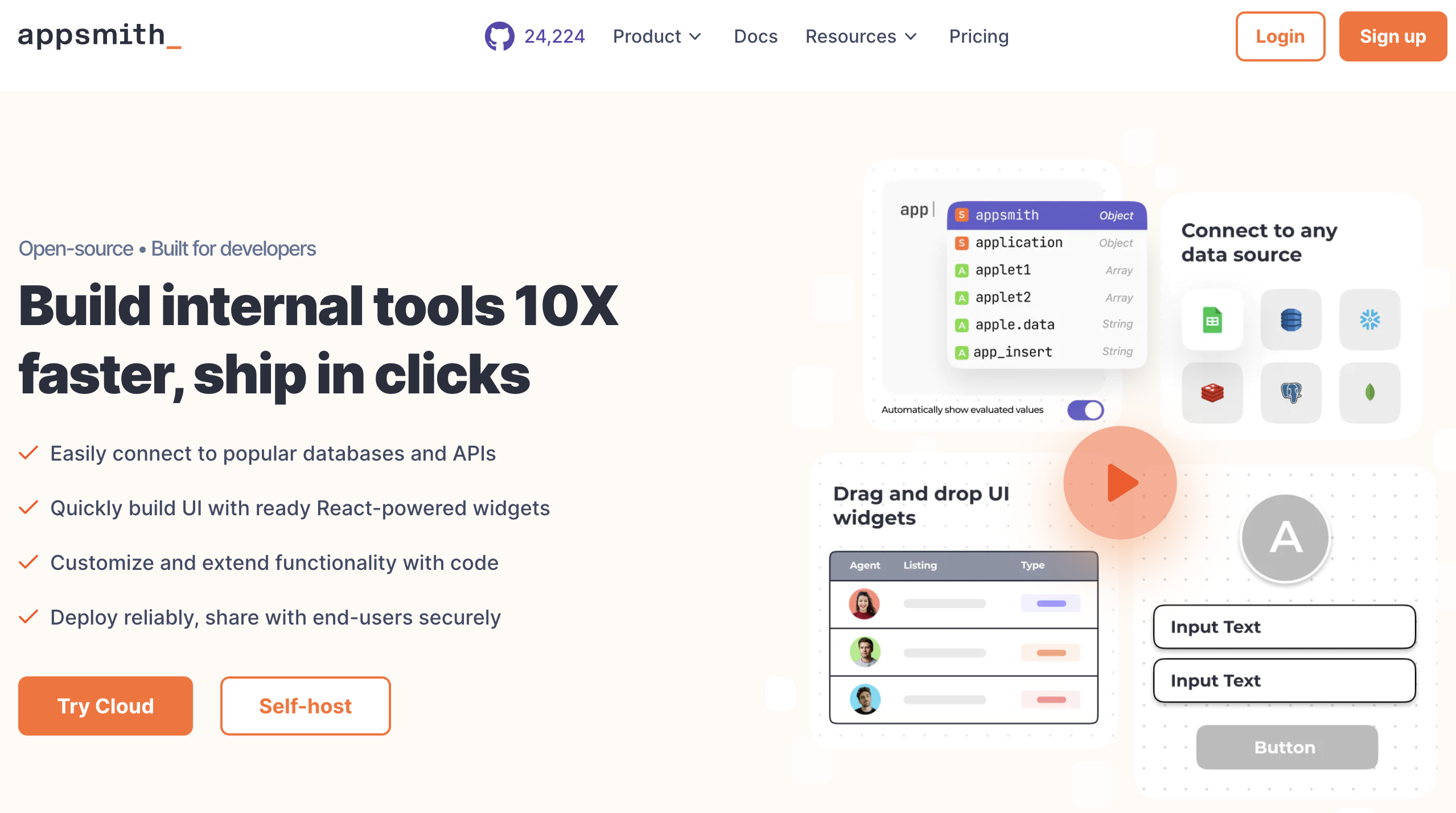
Appsmith is a low-code platform that enables you to build and deploy web, mobile, and IoT apps in minutes. The appsmith drag-and-drop interface makes it easy to build powerful applications without coding. A lot of users use appsmith to do rapid application development.
Appsmith offers many features, including data access and integration, security, messaging, analytics, and more. While other tools are available for building enterprise applications, like Retool or IBM’s Bluemix Mobile Services (which we will discuss later), they all require technical knowledge and expertise before you can start building an application.
Appsmith, on the other hand, lets anyone create apps just by dragging modules around their screen using their visual designer tool, which means that anyone can be up & running within minutes! The granular permissions are another strong pro for Appsmith.
Webflow
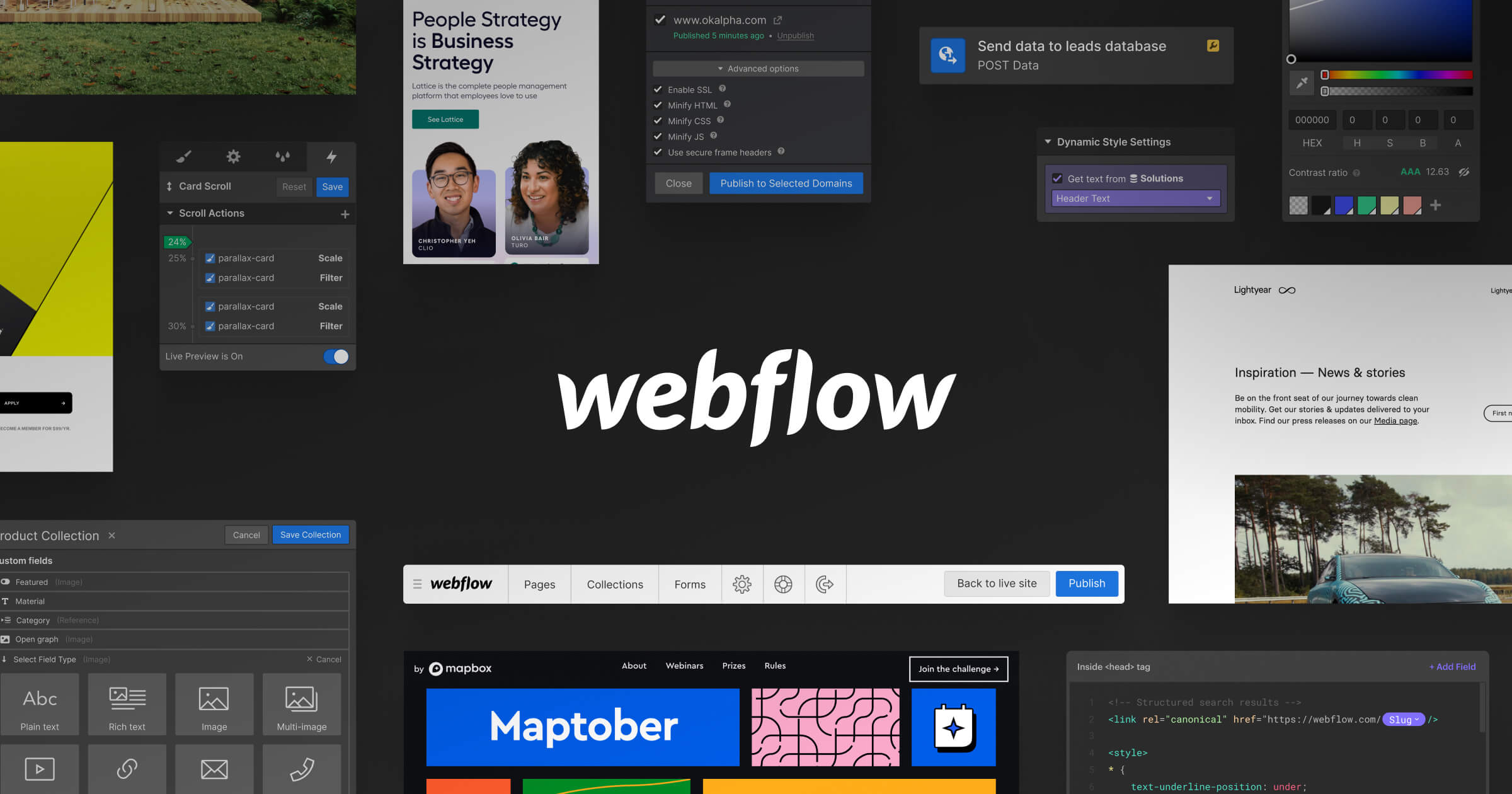
Webflow is a website design and development platform that allows for web applications and websites with less code. Both platforms provide a visual editor to design and layout pages, making it easy for non-technical users to create and manage their own applications.
However, while Retool is mainly focused on providing a low-code solution for building internal tools and applications, Webflow is more comprehensive and allows you to create the whole website, including design and content management. Webflow also allows developers to export the website HTML, CSS, and JavaScript, allowing them to work with the code and further customize the website if needed. At the same time, Retool is more oriented towards internal tooling and not focused on the deployment aspect.
Tooljet
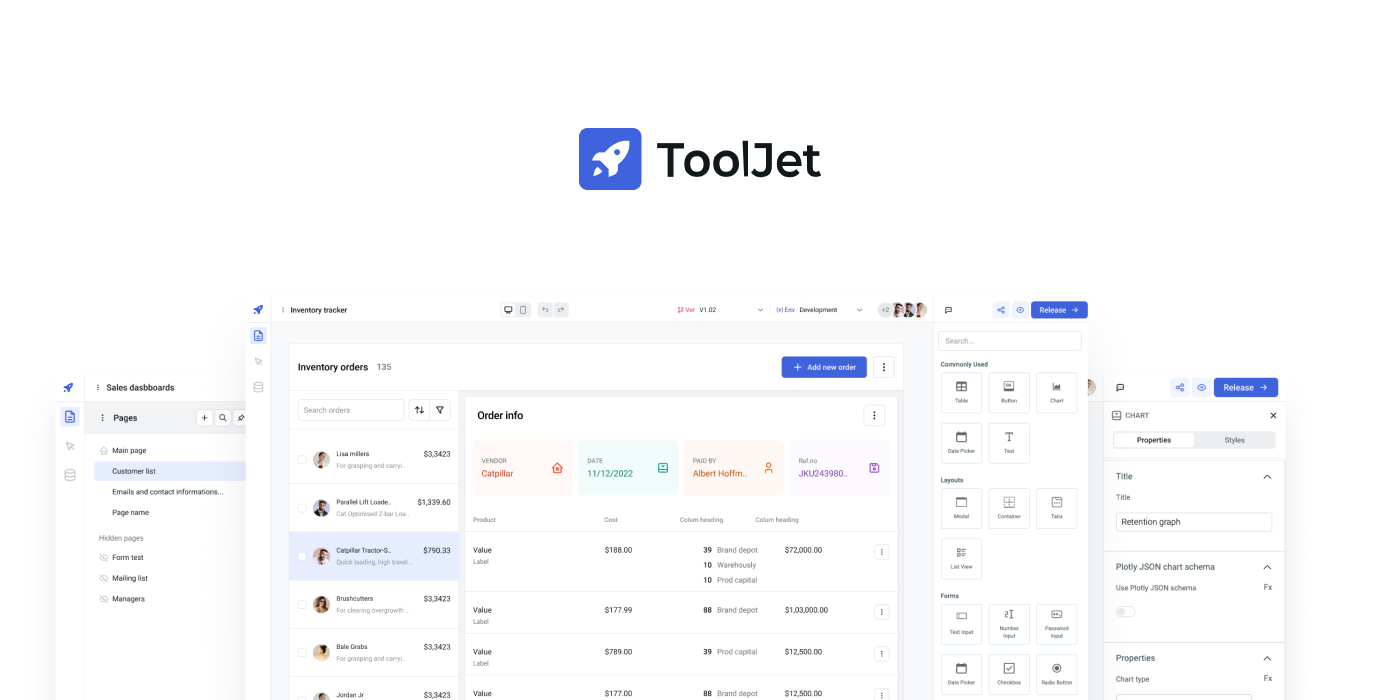
Tooljet is a low-code platform that allows you to build custom business applications without writing code. The tool uses a drag-and-drop interface, meaning you don’t need to learn how to code or hire a developer, but you can still build powerful and customized applications in minutes.
The Tooljet platform is all about user mode: the ability for users to create their own tools, while taking advantage of existing data sources within the toolset itself. This makes it easy for everyone on your team—from executives down through junior staff members—to collaborate on projects without having any prior technical knowledge. It also means that if there are changes in direction, they can be implemented quickly without incurring any additional cost or time lag.
The beauty of using Tooljet as an internal tools provider is that there’s no need for specialized engineers (or even development projects) because everything is built right into the toolset itself! This means that no matter which department needs its own software solution, it’ll know exactly where it can find what they’re looking for—and when it comes time for upgrades or changes down the road (which will inevitably happen), those updates will already be available as part of what was already being used beforehand.”
DronaHQ
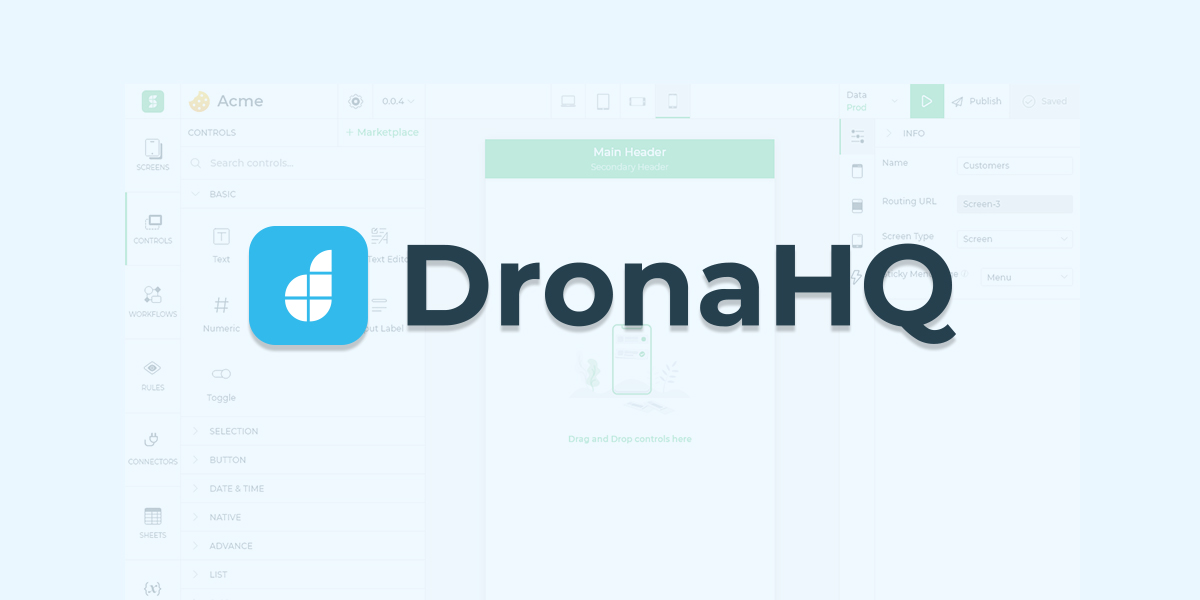
DronaHQ is here to build top-notch internal tools faster. The tool helps you to empower everyone in building mobile responsive and feature-rich apps and internal tools.
Moreover, this platform has been in no or low code space for a long time. This platform aims to focus on the mobile experience. The platform has been repositioned as an internal tooling solution.
Key features:
Here are the key features of DronaHQ you must know:
The platform offers a user-friendly and intuitive UI builder.
Moreover, this platform can help you connect to APIs, databases, and third-party applications.
You can also use DronaHQ to build experiences with action flows.
Pros
DronaHQ allows you to create reusable UI functions and components.
The platform also offers third-party integrations.
Developers can also extend tools’ functionality with JS.
Cons
The free plan of this platform doesn’t feature end-user mode.
A custom domain isn’t available in every plan.
UI bakery
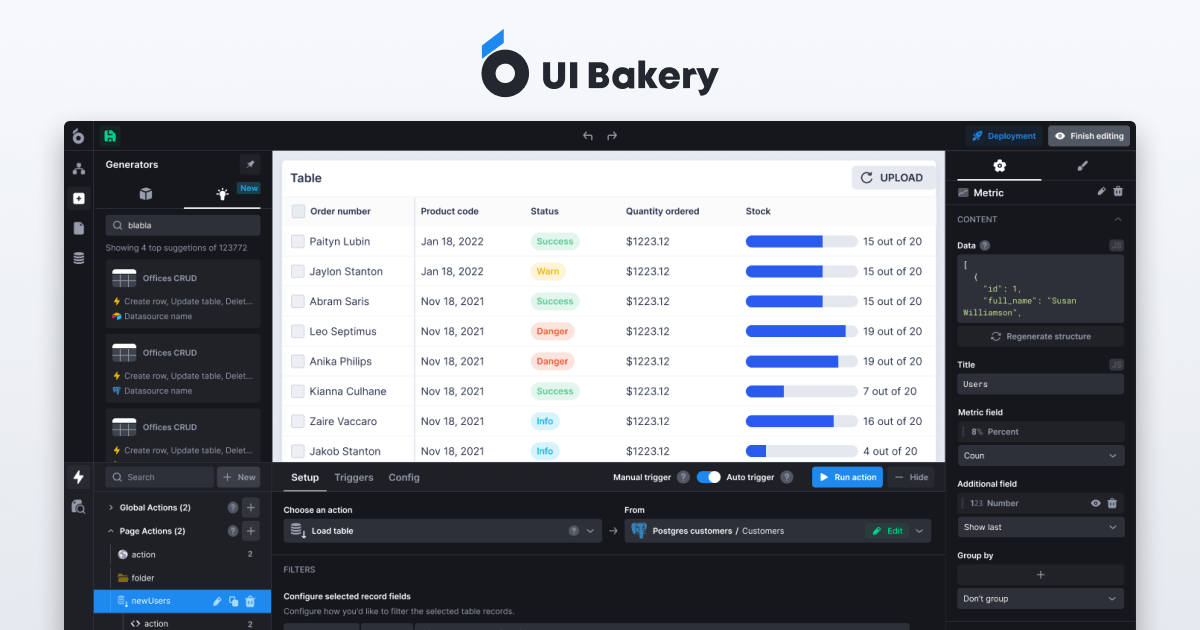
This app is a relatively new product but is still the perfect no-code tool for building internal tools and CRUD apps because of the predefined widgets and ready-made templates. It can easily connect to SQL Databases like MySQL, Google Datasheets, and Postgres.
Features:
It supports user management through Google, Twitter, and Facebook.
Developers can do app hosting on a unique URL
You can customize the widgets and templates.
Drawbacks:
It is not suitable for public-facing apps, customer facing websites, and mobile apps.
You need technical staff to deal with this, as it requires a moderate level of knowledge to deal with JavaScript.
Budibase
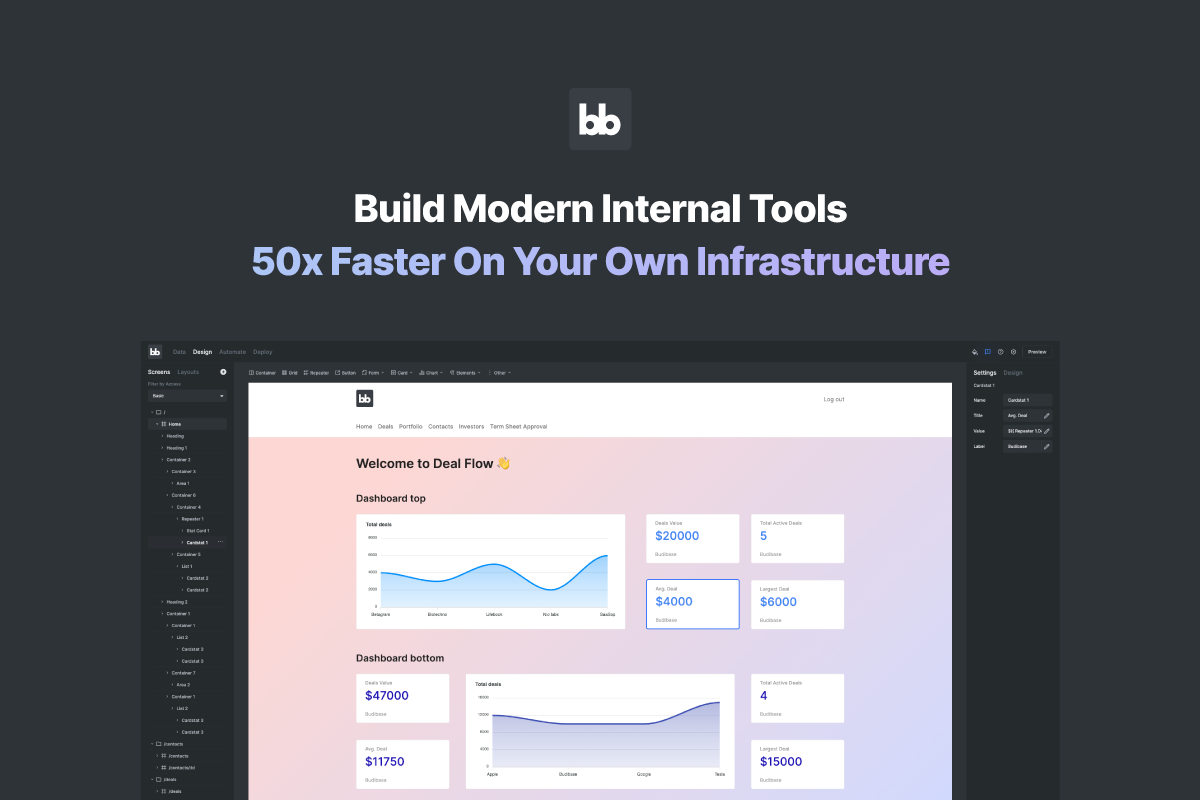
Budibase is a cloud-based platform that allows you to build and manage your own internal tools. The platform provides a drag-and-drop interface, which makes it easy to build your own tools. Budibase also offers an extensive library of pre-built templates that can be customized to suit specific needs.
Budibase allows you to create custom reports on any data source available and schedule them for future delivery via email or SMS/text message.
You can also easily import data from various sources, including Excel files, Google Sheets API, and more, into Budibase by simply copying paste into the app and defining its format through a simple copy-paste process. This enables users to add data from external sources without requiring writing code or installing any third-party application on their local machine, which makes setting up real-time analytics more accessible than ever before -
Build powerful internal tools with these alternatives to Retool. The best choice for you is ILLA Cloud.
If you’re looking for alternatives to Retool, ILLA Cloud is the best choice for building powerful internal tools. With its low-code solution, you can build your first tool in less than 15 minutes.
ILLA Cloud offers a free plan that allows you to build the app and get started with no credit card required.
The best choice for you is ILLA Cloud
In summary, we believe that the future of Retool is uncertain. If you’re looking for an alternative, we recommend ILLA Cloud because it has all the features and functionality you need to create powerful internal tools.
If your business needs a new solution or tool to help streamline workflow processes within your organization, look no further than ILLA Cloud!
You can check ILLA’s website here at: https://illacloud.com
GitHub page: https://github.com/illacloud/illa-builder
Join Discord community: https://discord.com/invite/illacloud
Subscribe to my newsletter
Read articles from Jerry Xu directly inside your inbox. Subscribe to the newsletter, and don't miss out.
Written by
